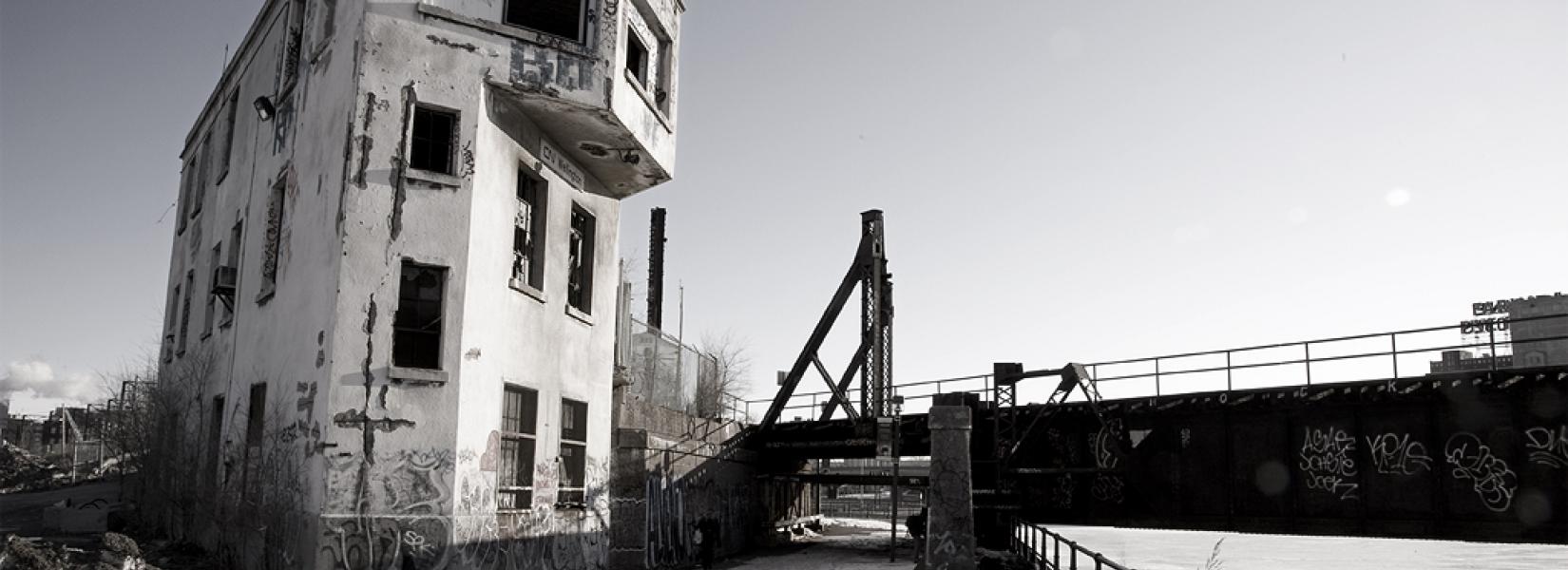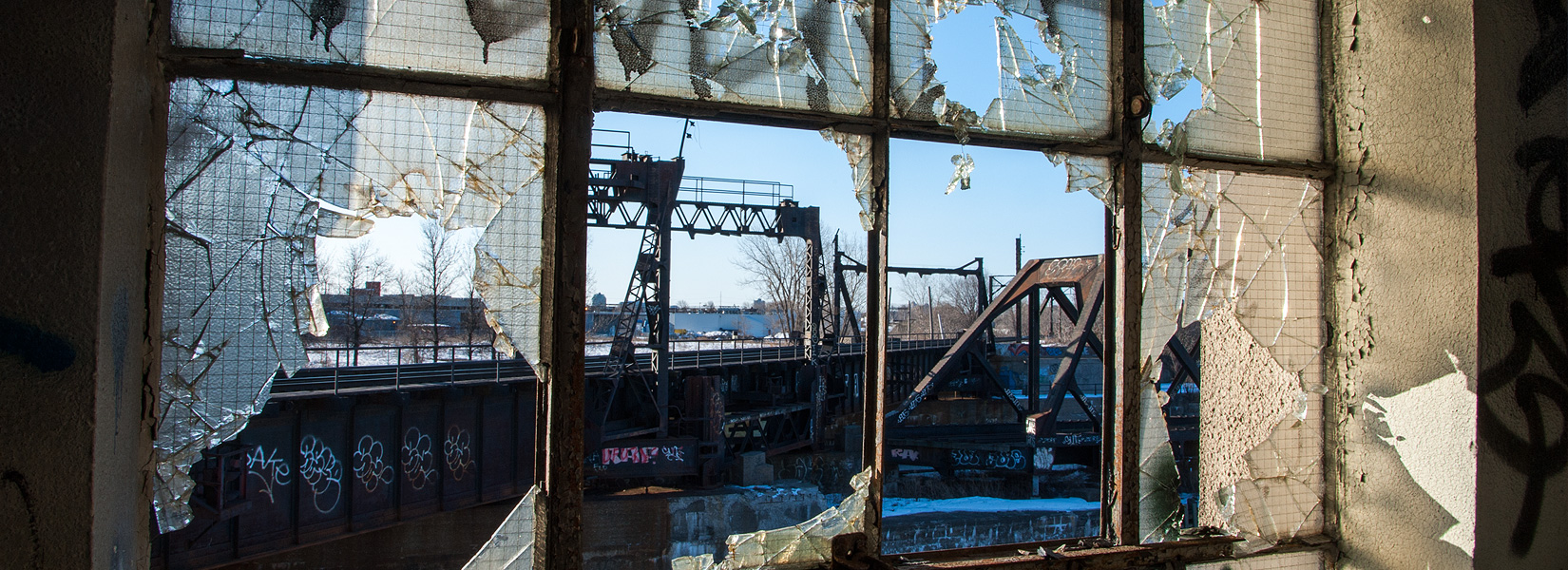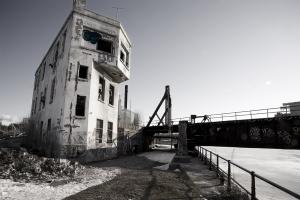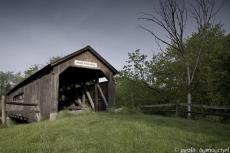The history of the Babcock & Wilcox in the Galindo valley began during the First World War when the difficulties of the Compañía de los Caminos de Hierro del Norte de España will result in the sale of the plant to the Babcock & Wilcox...
Wellington Tower
Old CN control tower
Built in 1930, the Wellington tower has ceased operations in 2000. Despite the years that have passed and graffiti artists who came to express their art, the structure of the old tower is still ok. When it was in operation, that's where that were managed comings and goings of boats on the Lachine Canal with the coordination of trains on the turn bridge next to the building.
Save the Wellington tower from decrepitude
Though it was referred to a revitalization of the tower to convert it to an bicycle halt, we must admit that nothing has been done since the project was announced in 2008.
Yet one year earlier, it has already been mentioned about a development of the Wellington tower for the reopening of the Lachine Canal. It was even talk of an interpretive center about the industrial past of the area. Unfortunately, the project died in the egg.
In fact, the only activity worthy of mention about the Wellington tower was the termination of his equipment, including a huge console to Exporail, the Railway Museum in St-Constant. The console is now displayed on the second floor of the Hays station on the site of Exporail.
Today, accesses are barricaded, but during our visit, the door was wide open. On the equipment side, there is almost nothing except dirts. Otherwise, the walls are covered with graffiti, ceiling tiles have started to fall and the water began to seep everywhere.
Related content
Heavily damaged by the time, the old copper mine is closed for several years. While its lower floors are completely flooded with muddy and stagnant water, the ground floor was, meanwhile, weakened by a sedimentary rock ceiling that collapsed in...
Located in Gloversville near Albany NY, this abandoned factory is ready to crumble. Before 1870, Gloversville was a small village called Stump City. When it became an incorporated village in 1853, the name was changed to Gloversville due to the...
In Quebec, we have built more than 1000 during the last century, but we count today only 88 of them. Covered bridges, a real relic of a time resolved, are unfortunately ill-suited to our modern life. Originally, they were appreciated for various...



















